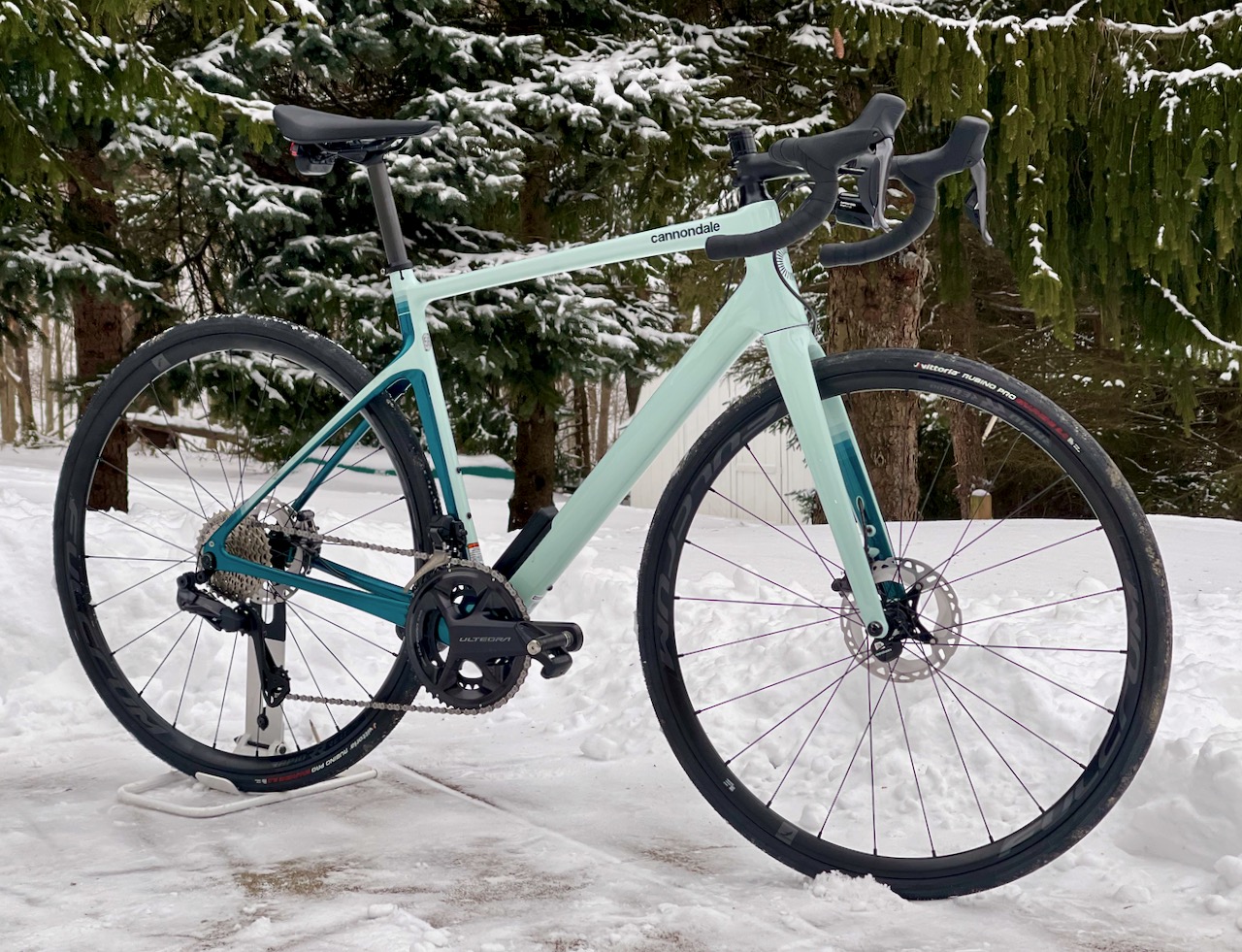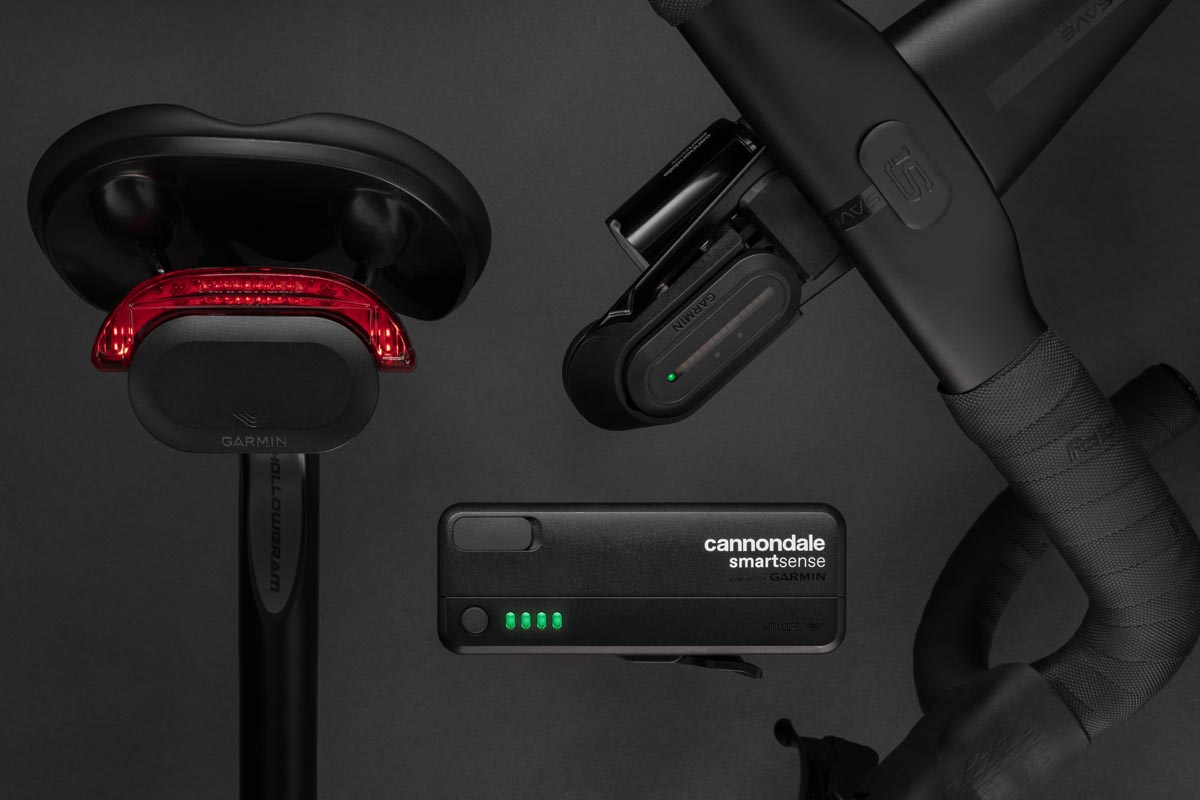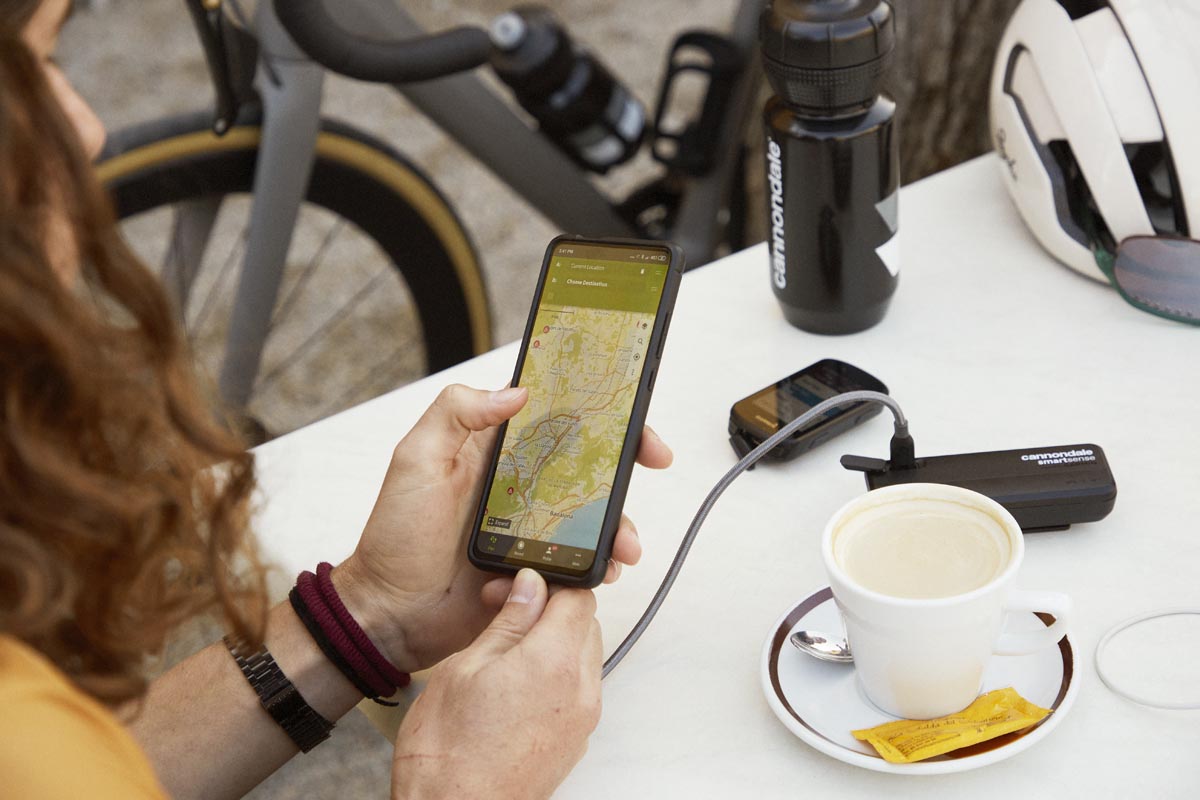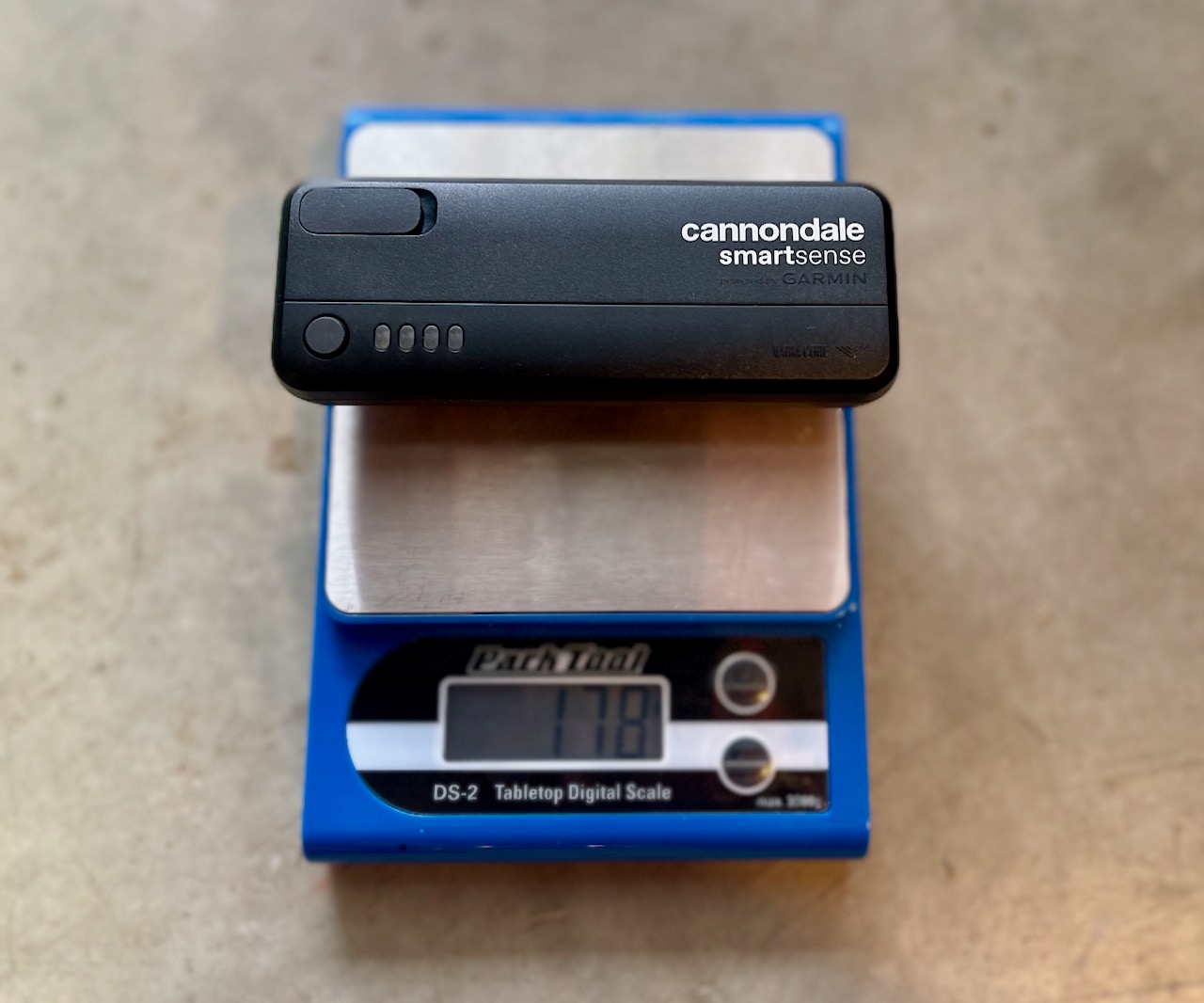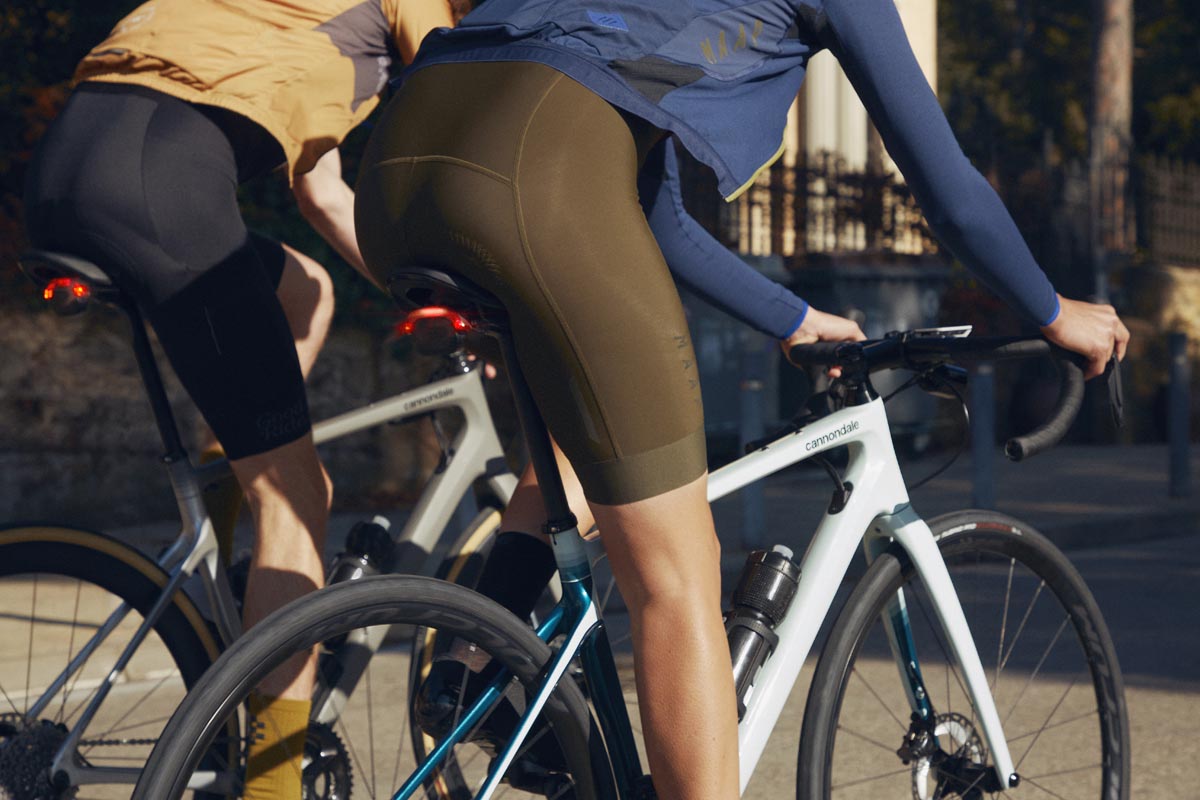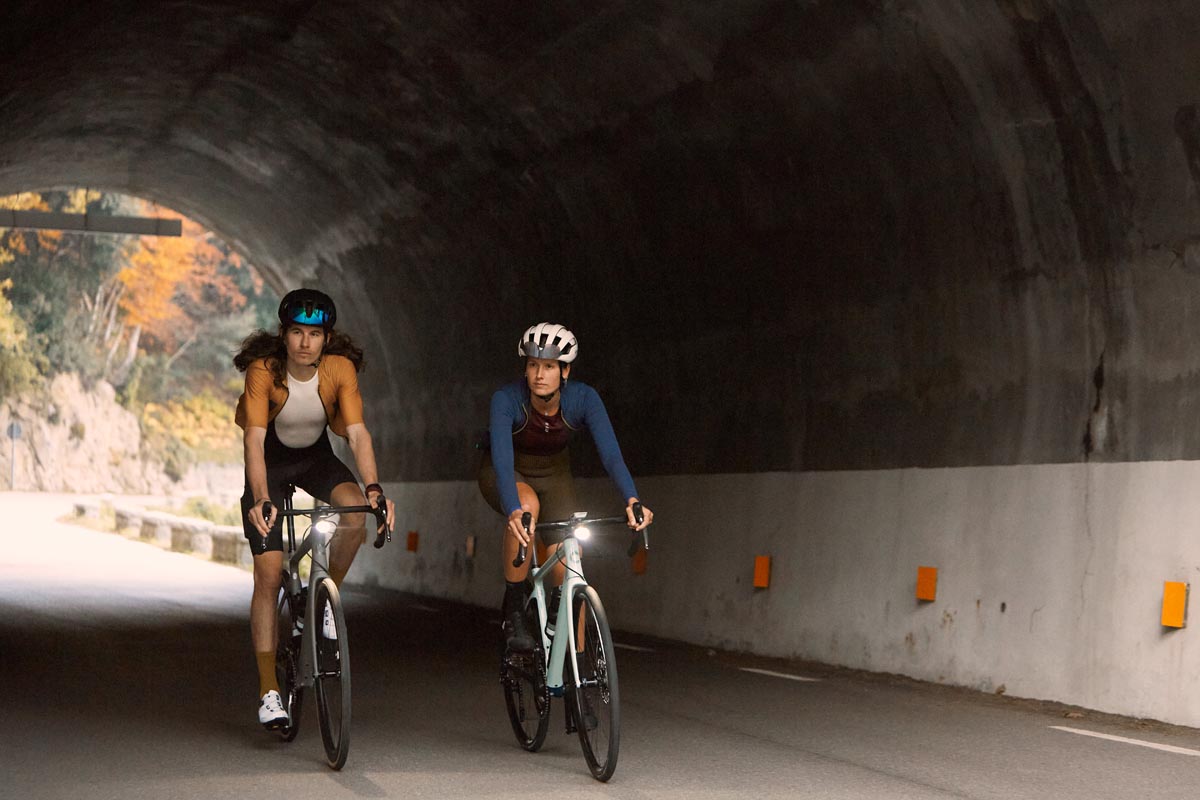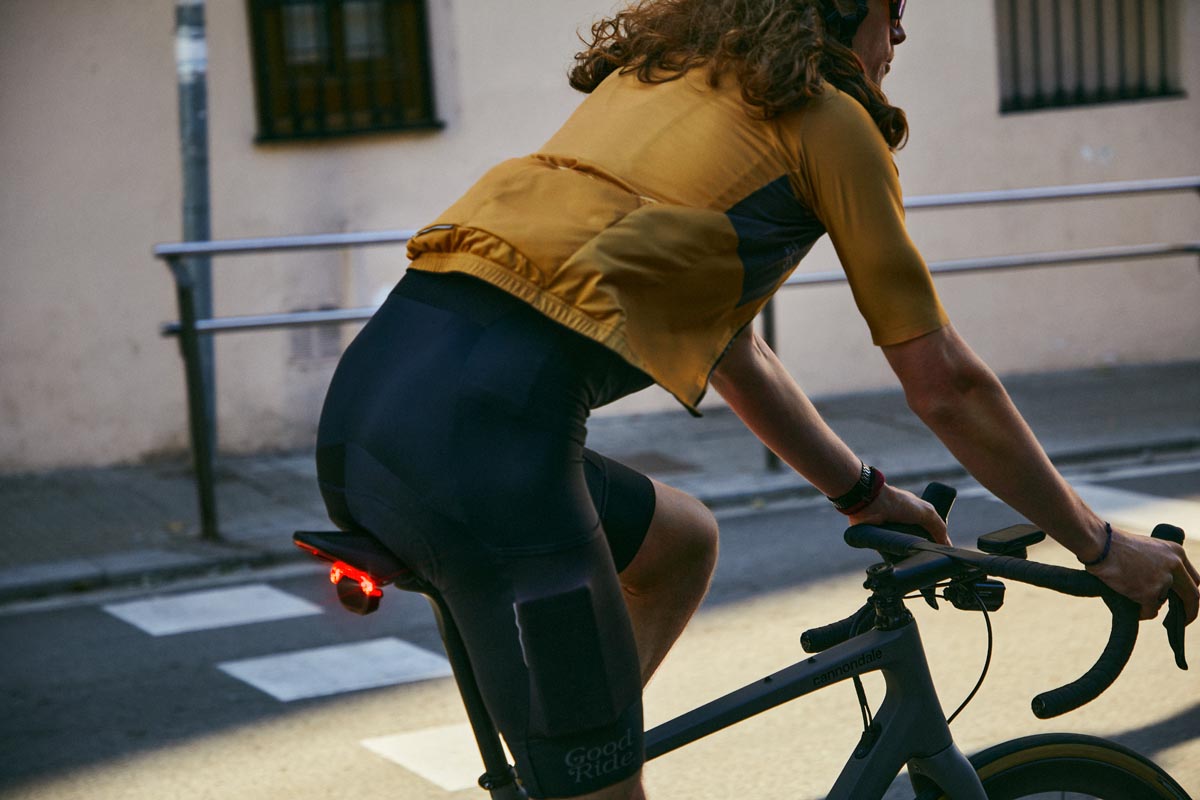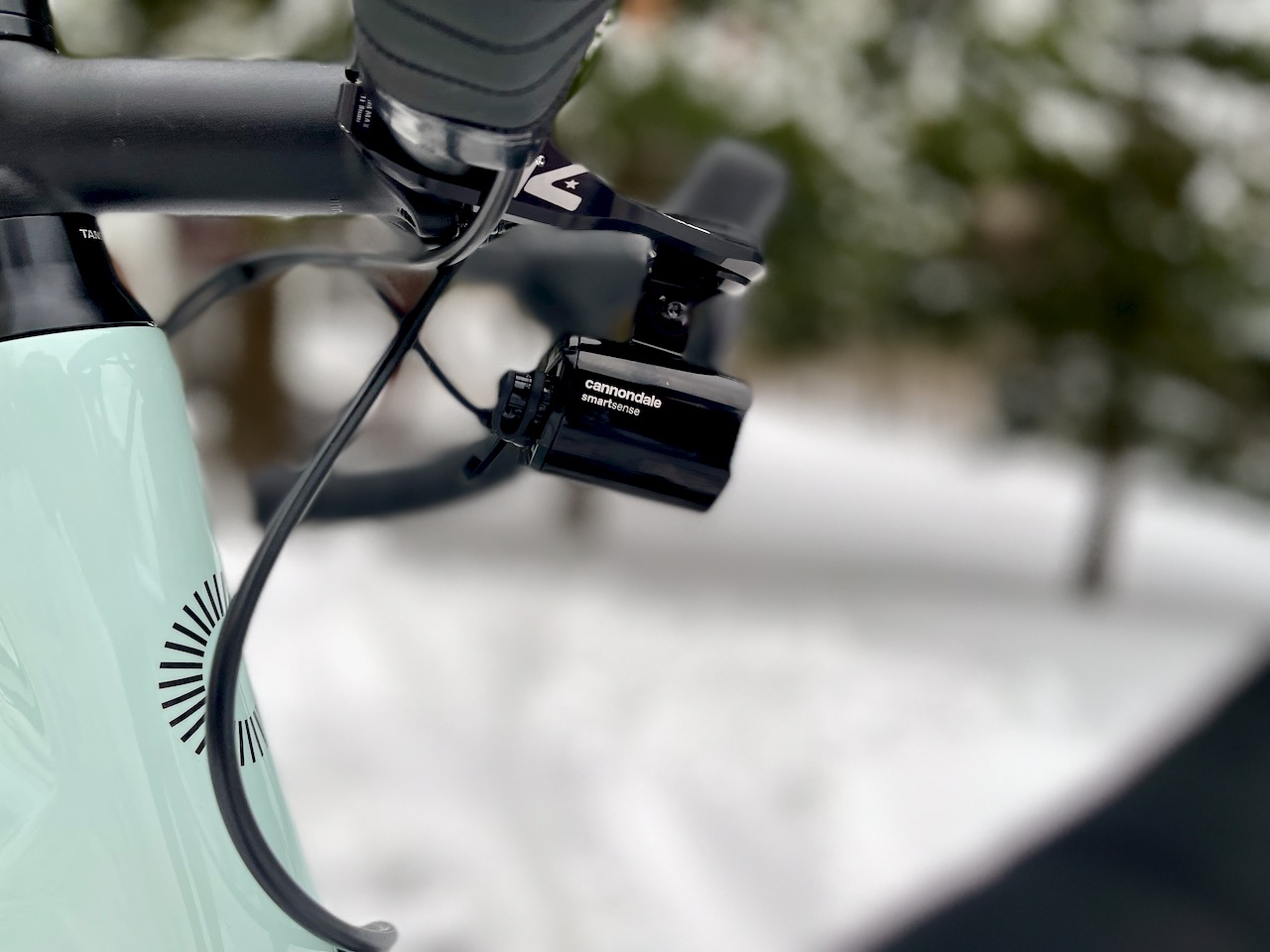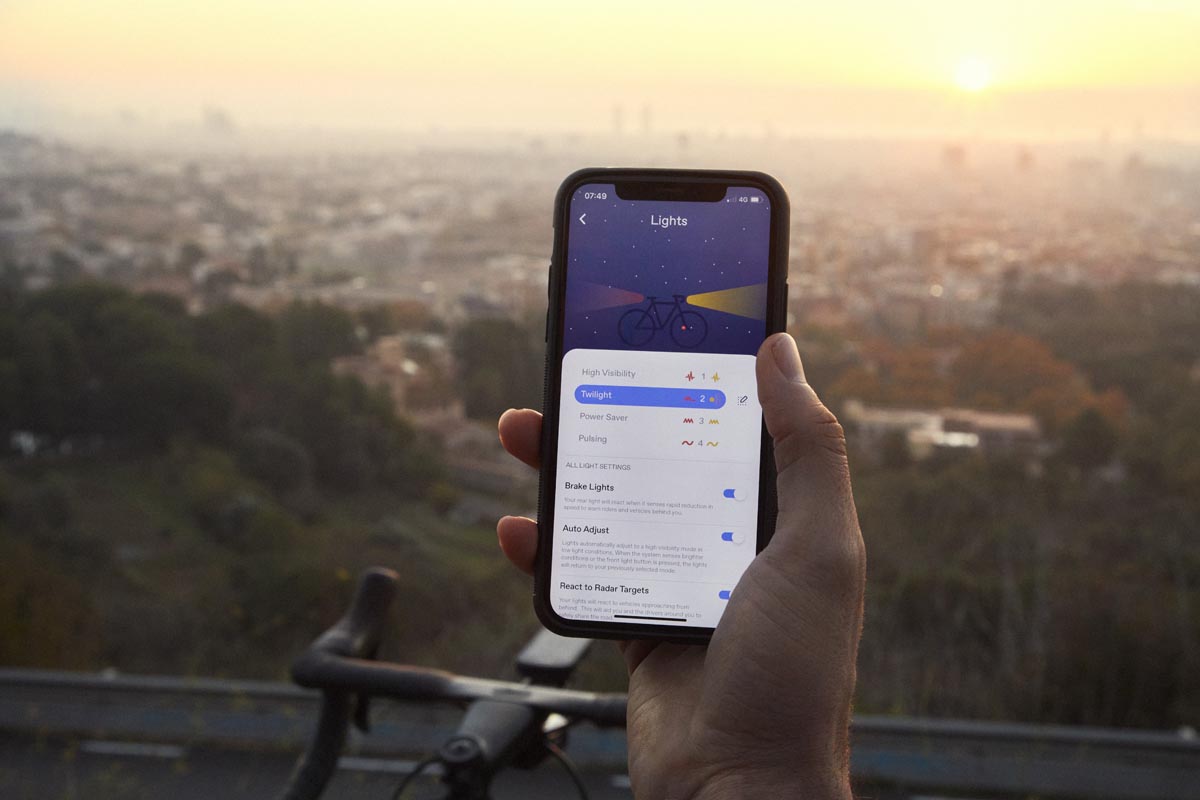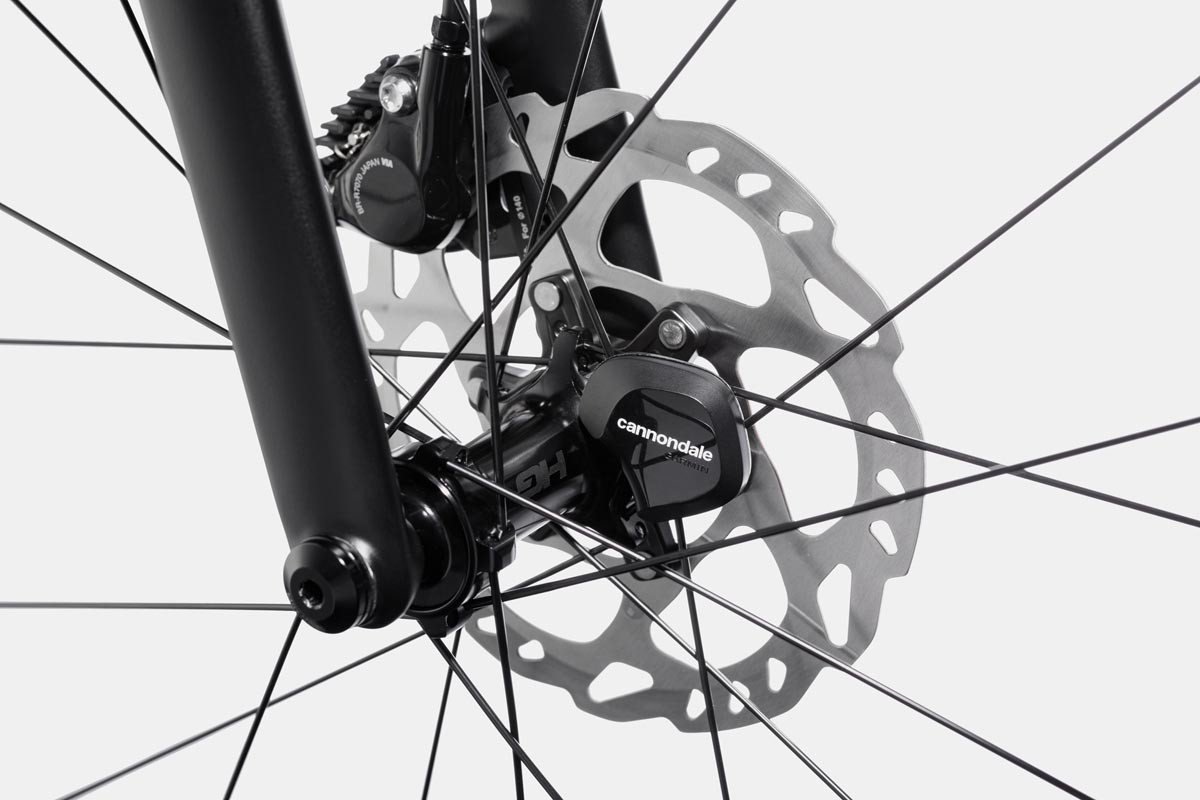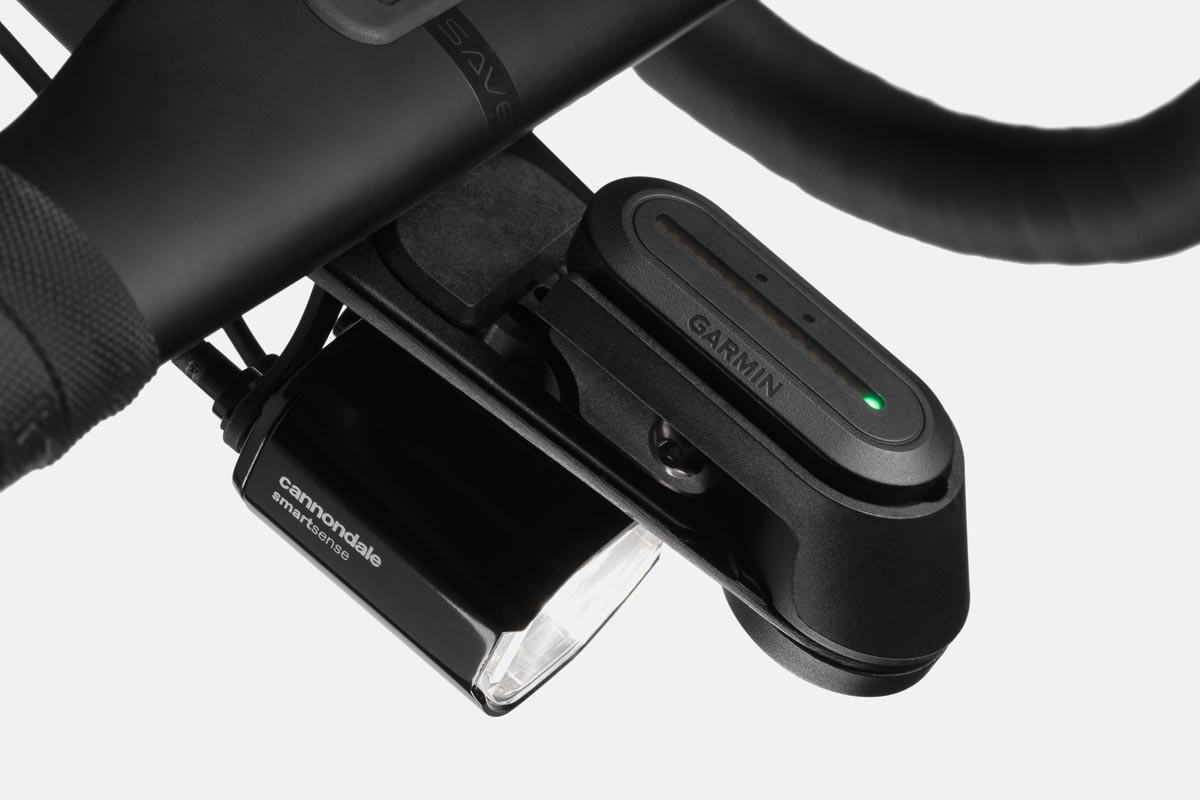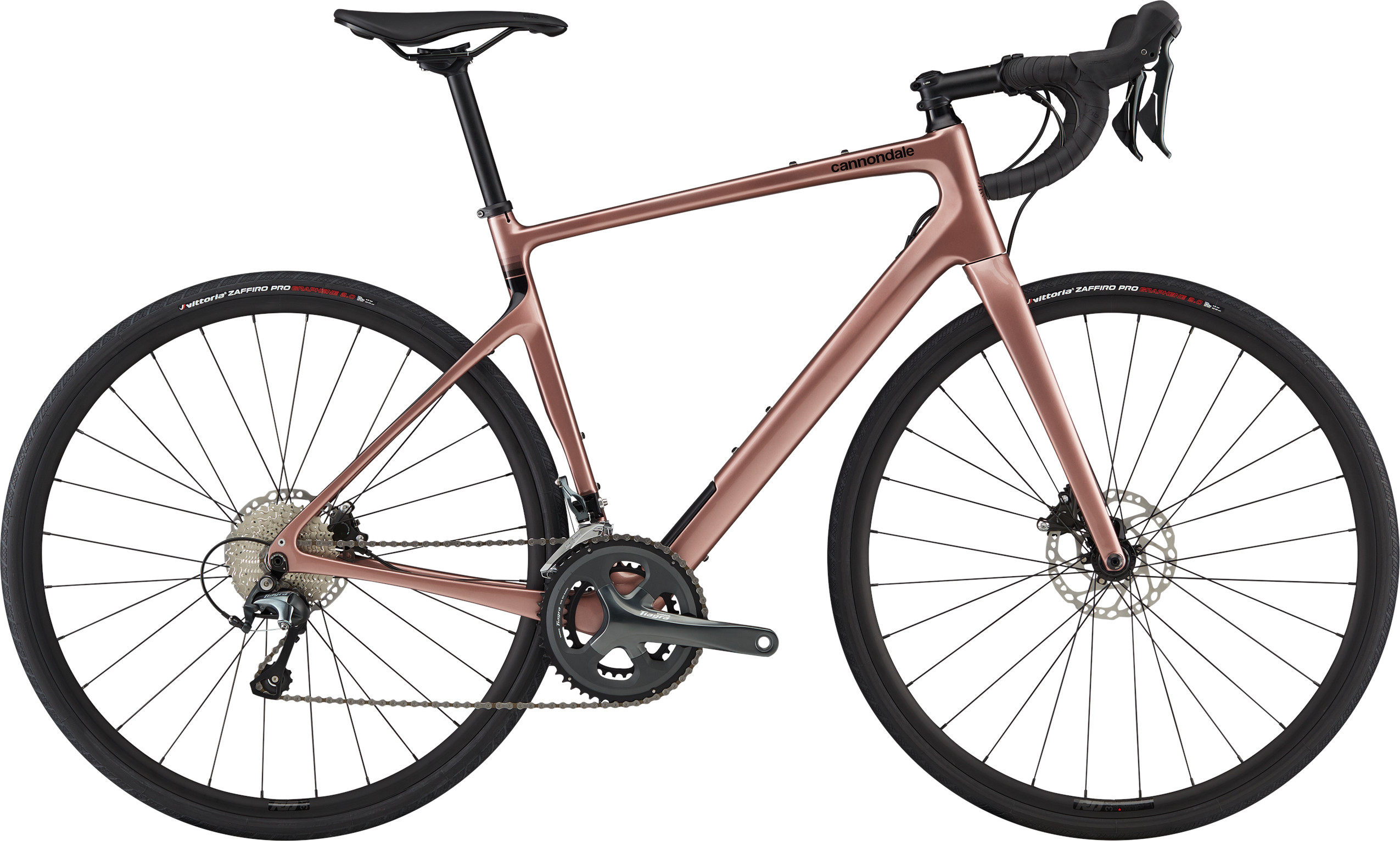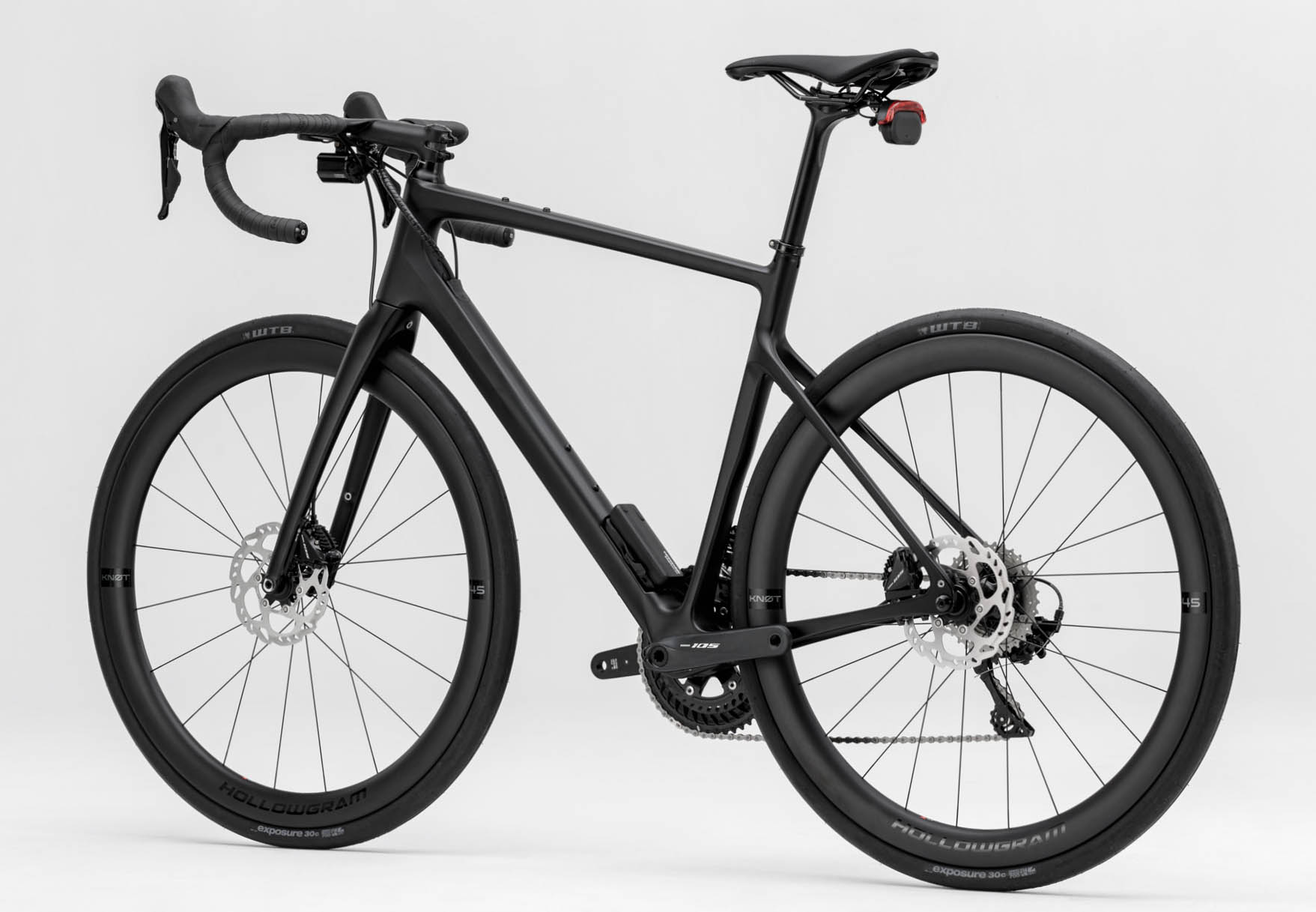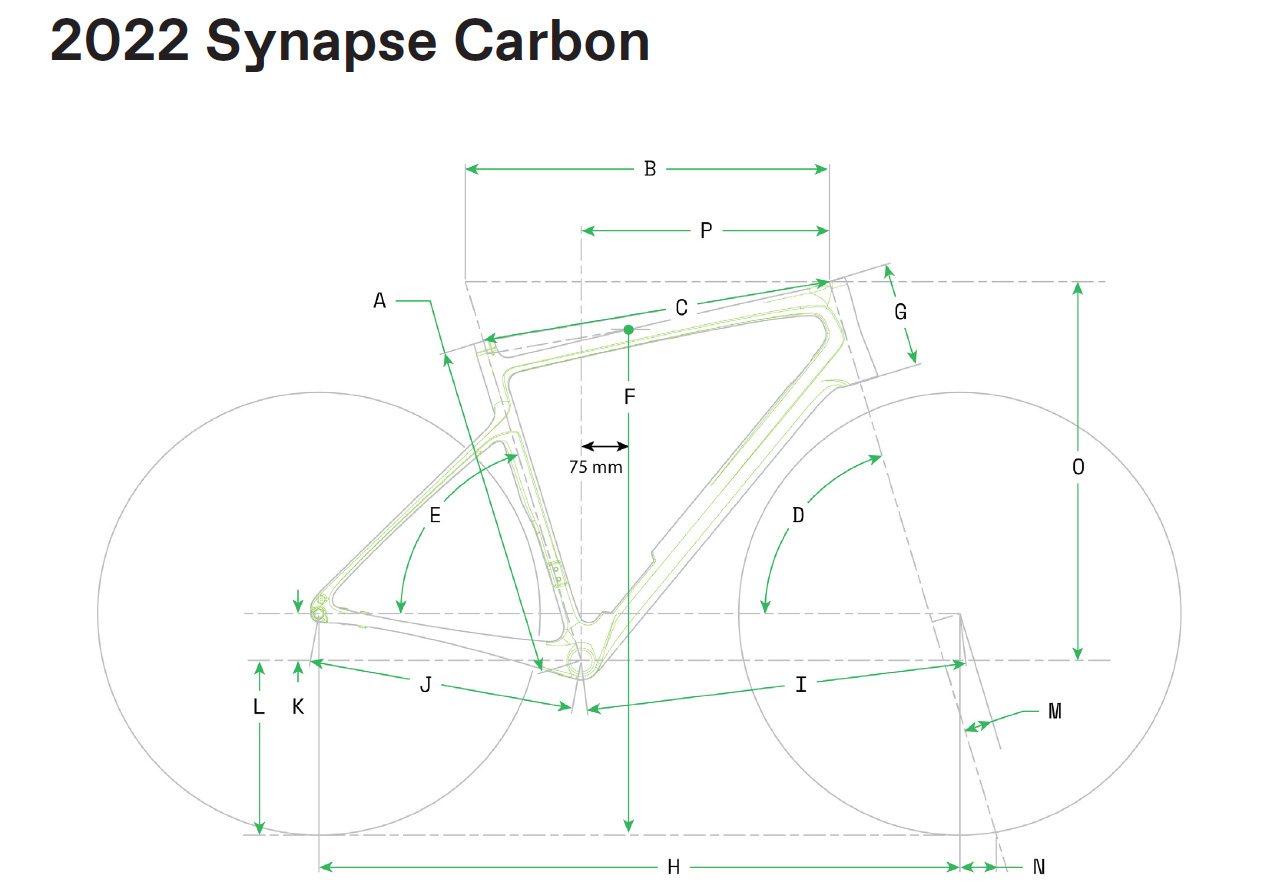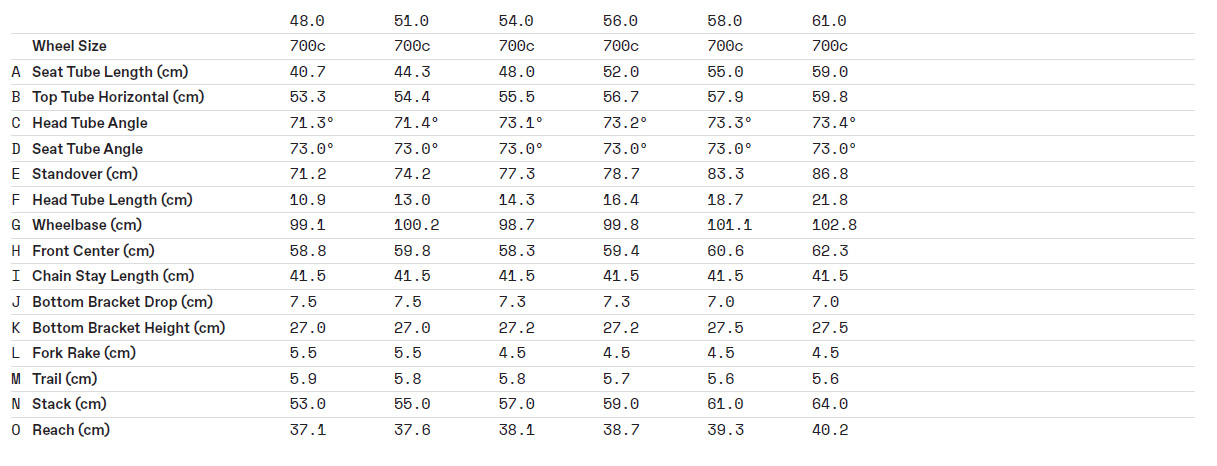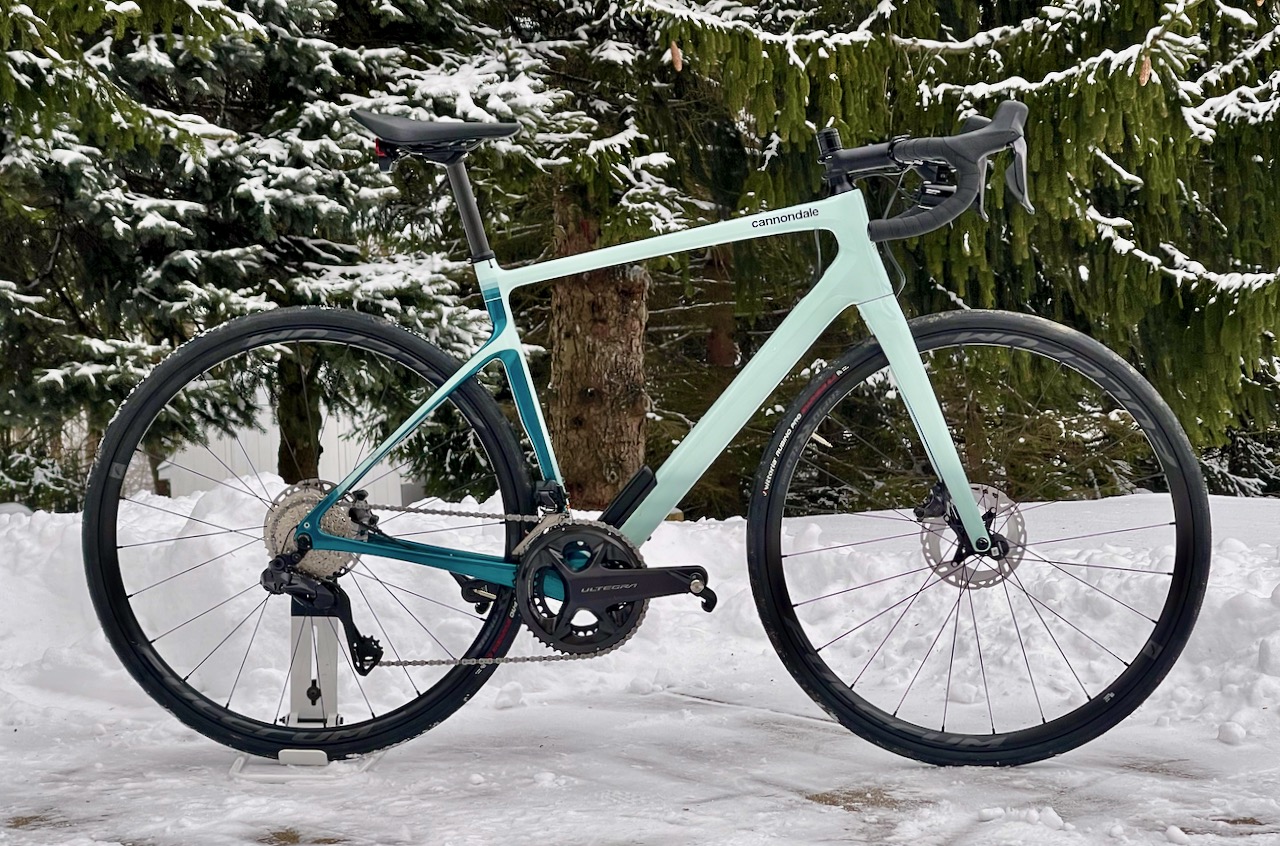What if your new bike made it easier and faster to get out for a ride? You’d probably ride more, right? Many of us that ride on the road have a similar pre-ride ritual, making sure our bike that came without any form of lighting or electronic safety aids are then loaded up with various battery-powered gadgets in an attempt to add some layer of safety to the ride. Wouldn’t it be great if all of that was integrated into the bike, and you only had to worry about a single battery before hitting the pavement?
Cannondale thinks so, which is why they are introducing their SmartSense system. A collaboration between Cannondale, Garmin, and Lezyne, SmartSense is a proprietary safety system that integrates the Garmin Varia radar and custom Lezyne lights into the all-new Synapse.
SmartSense
It’s hard to know where to start first—the new Synapse or the new SmartSense system. Both are exciting new platforms, and both will appeal to all types of riders, new and old. That was one of the main goals Cannondale had in creating the new system. They wanted to create a better ride experience for everyone, including beginners who have been drawn to the Synapse’s comfort and relaxed handling for the past 15 years. The Synapse was also Cannondale’s first carbon road frame, so it sort of makes sense to use it as a platform to introduce the new SmartSense system.
One battery (for the lights and radar, that is)
Much of what SmartSense offers is available separately, but with multiple add-on components which all have a separate battery. Rather than having to keep track of the battery life of multiple components, and removing each one when it’s time to charge, SmartSense integrates almost everything into one system with a single Garmin Varia Core battery pack. That 3450 mAh battery pack can be removed to be charged or you can use it once removed to charge other devices, like your cell phone. Battery life is claimed to be around 2h 45m on full brightness, or up to 20h on the most efficient modes.
The battery pack itself weighs about 178g on our scale. If you’re wondering about how much weight the system adds to the bike in total, Cannondale couldn’t give us an exact figure but they did say that the weight of the new bike is about the same as the previous model thanks to weight savings from the redesign of the frame itself.
When it’s time to charge, the battery pack is removed and plugged into any USB-C charger and should take about three hours. One thing to note—the Garmin Varia Core battery pack will not charge your electronic drivetrain or head unit while you’re riding. You could technically stop riding, remove the battery pack, and charge your head unit if you run out of juice, but you’ll still need the Di2 seat tube battery pack to power your drivetrain. We’d love to see one, and only one battery pack to power everything. Hopefully, that will be a future upgrade.
On your radar
For the RLE models (Radar, Lights, Electronic drivetrain), that Garmin Varia Core will power a headlight and taillight from Lezyne, as well as the Garmin Varia Radar system which is nestled together with the rear light. The radar then communicates with either the Radar Display Unit (RDU), the Cannondale App Ride Screen, or a bike computer head unit from Garmin, Wahoo, Hammerhead, and compatible ANT+ head units.
Meant to warn you of oncoming traffic, the Varia Radar uses a color-coded alert system. Green means there are no vehicles detected, Amber means a vehicle is approaching from behind, and Red means there is a vehicle coming at a high rate of speed. Those alerts are either displayed on the RDU or your head unit as you’re riding. In this case, the radar can also be programmed to react to approaching radar targets—meaning it will alter the flashing light pattern and/or make the rear light brighter to (hopefully) get the attention of the approaching motorist. Along those lines, the rear light also has a brake alert function which lets people know that you are slowing down.
Custom Lezyne lighting
Speaking to Cannondale about the design, they mentioned that drivers are trained to react to lights—whether that’s brake lights, flashing emergency lights, etc. SmartSense works along those lines to help make cyclists more visible, and hopefully, safer as well.
As for the lights themselves, they are custom-designed for Cannondale by Lezyne and include the 350-lumen Foresite E350 up front and the 85-lumen Hindsite E85 out back. Note that European bikes will have a different Hindsite E25 StVZO rear light with only 25 lumens to comply with EU regulations. These are the only lights that will be compatible with the SmartSense system.
In terms of operation, there are several modes and options you can choose from within the app, but the system comes pre-programmed with four modes. These include High Visibility, Twilight, Power Saver, and Pulse. As soon as you start riding, the wheel sensor will pick up movement and automatically turn on the system using the Auto Wake feature. Stop for more than six minutes, and it will turn it off as well. Stop for two weeks, and it goes into Deep Sleep—you can also enter or exit Deep Sleep at any time by pressing the power button on the battery for more than four seconds.
While riding, you can cycle through light modes with the button on the back of the front light (which also allows you to turn the lights on/off manually, say if you are riding on a bicycle-only path where you might not need lights). The lighting modes can be further customized through the Cannondale App.
Additionally, there is an Auto Adjust in Low Light mode which will automatically increase brightness when the system senses darkness (like riding through a tunnel, or heavily wooded area). Then once you’re back out in the sun, the system will return to the selected mode. This can be turned on or off or customized in the app as well.
R-L-E
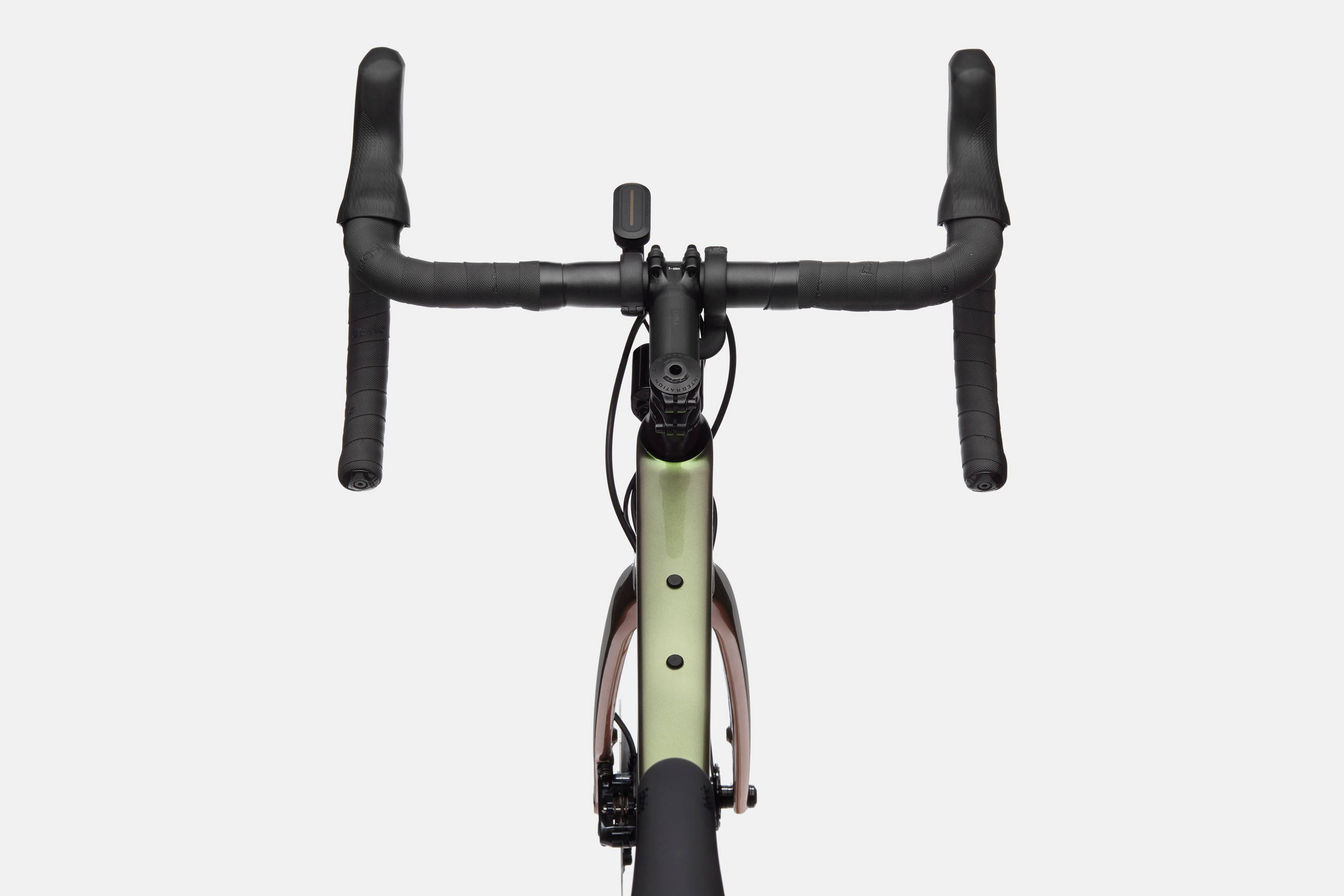
Depending on the build level, some bikes will get the full RLE treatment with Radar, Lights, and a Shimano Di2 Electronic drivetrain. Other bikes will come as RL builds which lose the electronic drivetrains but keep the Radar and Lights. There are also ‘L’ models which don’t include the Garmin Radar system but keep the Lezyne lights and Garmin Varia Core battery pack. At the highest end, models that include the HollowGram SAVE SystemBar will include a one-piece mount for both the RDU or computer head unit, with the front light underneath. Models with traditional handlebars will include a two-piece mount, one for the RDU and one for the front light. However, if you want to combine them, you can use an aftermarket double-sided mount like those from K-Edge which allows you to mount both the light and your head unit on one mount.
And the most entry-level models still include a “SmartSense ready” carbon frame, but won’t include any electronics. Cannondale will offer the SmartSense system separately, so riders who purchase a Synapse without it can upgrade to the full package in the future. For now, SmartSense is 2022 Synapse-only, meaning it’s not backward compatible and you need a compatible frame and seatpost to make it all work together. Pricing for the full SmartSense package starts at $5,000 for the Synapse 2 RL, but the Synapse line will start at $2,400 for the base model 4. Also, as a nice touch, all models include an extra ‘trainer-compatible’ thru-axle for use with trainers that clamp down on the outside of the rear axle.
All-new Synapse frameset
After all that, it’s almost easy to overlook the fact that the Synapse frame is all-new as well. The Synapse is known for being a comfortable, confidence-inspiring road bike. That hasn’t changed. In fact, it’s only gotten better with a claimed increase in compliance by 8%. Add in the fact that the new frame and fork now clear up to 35mm tires, and you’re left with a very comfortable bike even if your rides include broken pavement, smooth dirt roads, or even light gravel.
But the new Synapse has gotten faster as well thanks to lessons learned from the Cannondale SystemSix. Cannondale states that wind tunnel testing has confirmed an 11% drag reduction compared to the previous Synapse model without sacrificing comfort. Part of that comes from their Proportional Response design, which is a fancy way of saying that each frame has a size-specific design. Tubing sizing, layup stiffness, and geometry are all tuned for the specific rider size on each frame size.

That’s all well and good, but we think people will be equally excited about some of the new frame details. Specifically, the move from a BB30 to a standard BSA threaded bottom bracket! No more Cannondale-specific bottom brackets, cranksets, or adapters needed. You’ll also find standard 12x142mm and 12x100mm hub spacing which will make the new Synapse compatible with most wheels on the market.
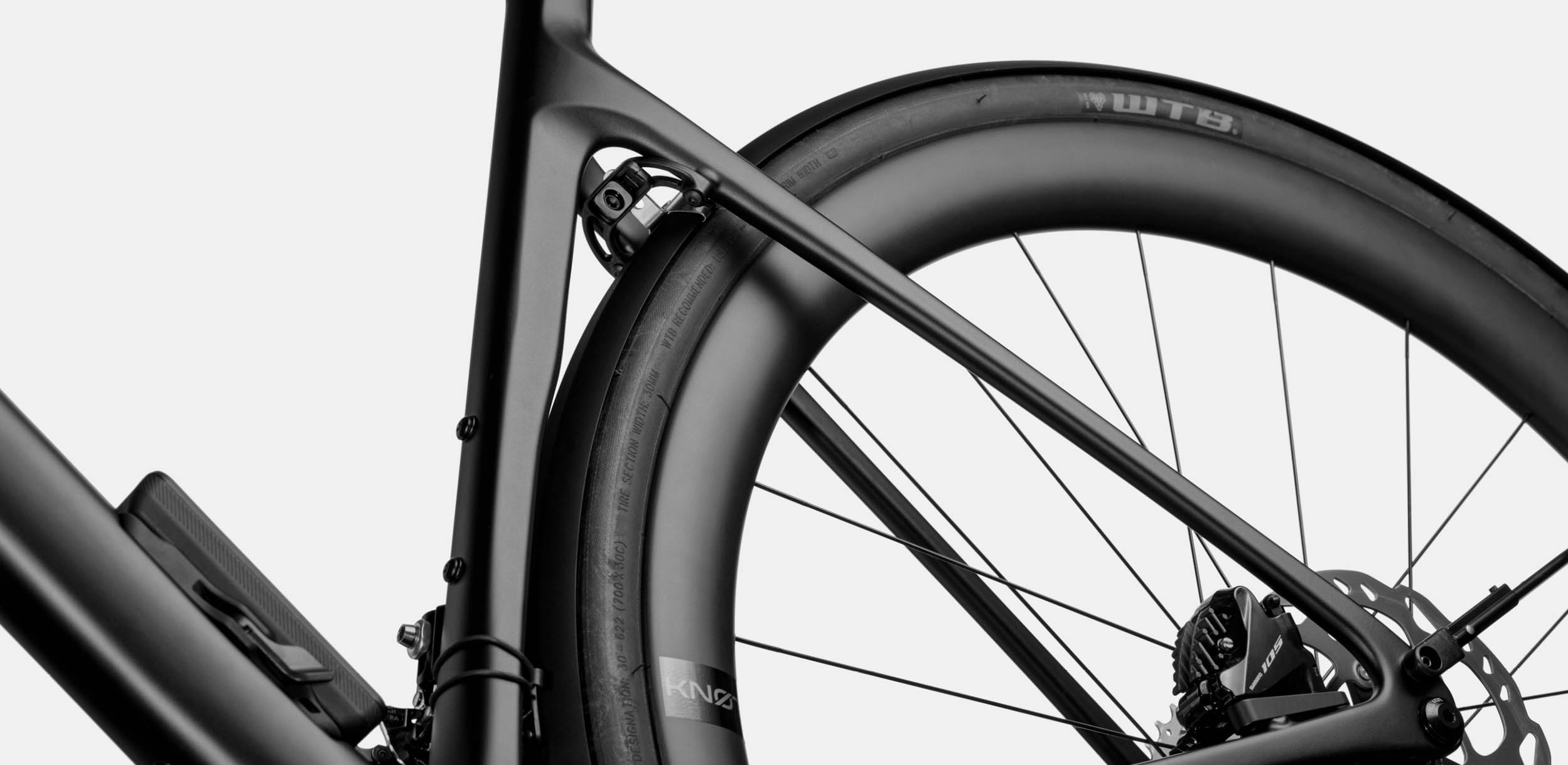
The frame’s cable routing is internal with an entry point behind the head tube, on the top of the downtube. The Synapse also includes many accessory mounts including three water bottle mounts, top tube bag mounts, and hidden rack/fender mounts with a removable seatstay fender bridge. The positioning of the light/radar system means you may have to choose carefully when it comes to saddle bags.
Cannondale tells us that some will work, while others won’t. But that’s one of the reasons they included the top tube mounts.
Geometry
Available in six sizes, the new Synapse starts at 48cm and tops out at 61cm frames all with 700c wheels and tires.
First Impressions – coming soon
We had hoped to get a solid first impression of the Synapse with SmartSense by the time of launch, but time and weather constraints have slowed things down a bit. We should have those soon though, hopefully for both the Synapse Carbon 2 RLE above and another model as well. Stay tuned!
For more on the different models and pricing, check out the full list of 2022 Synapse models offered in the U.S., here.
